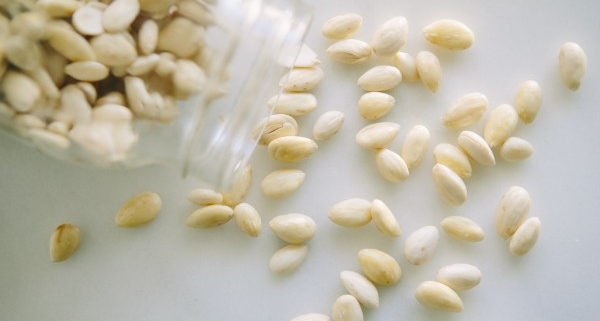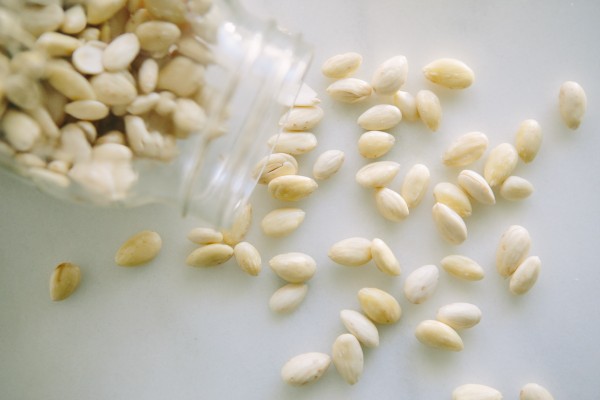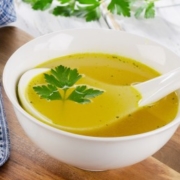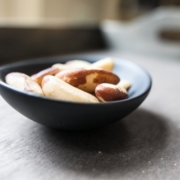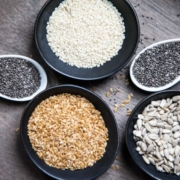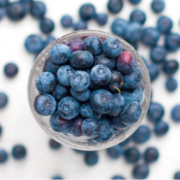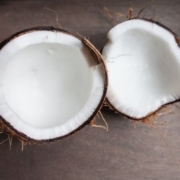With a huge surge in popularity over the last several years, nut milk is more and more common on the shelves – and not hidden away in special food stores or health food sections.
For many people with dairy allergies or lactose intolerance, or those who have chosen a vegan diet, alternatives like almond and cashew milk are easy replacements, allowing them to continue to eat the things they enjoy – but without the discomfort that comes with dairy milk.
The makeup of nut milk is actually pretty simple: nut milk is simply filtered water, the nuts or seeds of your choice, and additional flavoring like coconut oil, agave, vanilla, etc.
But what makes nut milk so special?
An Alternative to Dairy
If you seem to have a bad reaction to dairy milk, you may have lactose sensitivity or intolerance. There are a few key signs to look for:
- Constipation
- Gas
- Acne
- Heartburn
- Headaches
- Arthritis or joint pain
- Worsened IBS or celiac disease symptoms
Now, please remember that these symptoms DO NOT necessarily mean that you have lactose intolerance or sensitivity, but can be telltale signs. I generally recommend – if you think you may have a lactose problem – cutting dairy out of your diet completely for 30 days to see if these symptoms subside.
Nut milk isn’t just for people who need an alternative, though. Many people choose nut milk for its flavor, versatility, and health benefits. While nut milk tends to have less protein and calcium than typical cow’s milk, the low calorie count and natural source of vitamins A and D make almond, cashew, and other kinds of nut milk a consistently popular choice.
Nut milk also provides nutritional value in other important areas:
- A good source of riboflavin, niacin, folate, and other vitamins
- Helps reduce blood pressure
- Naturally cholesterol free
- High potassium reduces heart strain
- Helps boost immune system
Beyond its nutritional value, nut milk is also environmentally sustainable, and made without any animal products.
If nothing else, dairy milk has a much higher fat content – making it a less than ideal choice for those trying to lose weight, those with heart trouble, or those struggling with high cholesterol.
The Dairy Myth
For some reason, people tend to think that dairy milk is the only place they can get adequate daily values of calcium! They don’t want to switch to nut milk because, well, they don’t think their families will be able to get enough calcium without drinking milk – even if it causes other health problems!
You don’t need to suffer through lactose intolerance just for the sake of calcium, though. Plenty of plant-based foods can provide your body with the calcium it needs. Here are just a few calcium rich plants you can eat:
- Broccoli rabe – 100mg of calcium
- Sesame seeds – 350mg calcium per ½ cup
- Almonds – 120mg of calcium per ½ cup
- Arugula – 160mg of calcium
- Kale – 150mg of Calcium
Now, compare those to the National Health Institute’s recommended daily intake:
- 4 – 8 years old: 1,000mg per day
- 9 – 18 years old: 1,300mg per day
- 19 – 70 years old: 1,000mg per day
With nut milk and healthy veggies (and other natural sources of calcium), the NIH recommended amounts can easily be achieved without dairy milk.
Especially for those who struggle with bloating, discomfort, and even severe pain when consuming dairy products – there’s no need to suffer for the sake of calcium!
Know Your Nut Milk
Delicious, creamy nut milk is quite gentle on your digestive system. Because nut milk contains omega-3 fatty acids (and doesn’t contain lactose), it actually aids in digestion and fights the inflammation that is so often associated with dairy.
Be aware, however, that store-bought nut milks can be quite pricey, and can even contain ingredients that chip away at the health benefits – particularly a food additive called carrageenan.
According to The Cornucopia Institute, “…The use of carrageenan in food is not safe. Animal studies have repeatedly shown that food-grade carrageenan causes gastrointestinal inflammation and higher rates of intestinal lesions, ulcerations, and even malignant tumors.”
Be aware of the hidden ingredients that may be included in store bought nut milk. For an organic, homemade option – check out the wonderful Nectar & Green. Their small batch almond milk is available in a range of flavors, and can even be ordered for delivery in the Boston area! This option is especially useful for people on the go. Check out their website for more details, as well as the locations where Nectar & Green almond milk can be picked up (if delivery isn’t right for you).
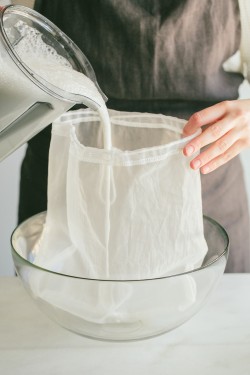
courtesy of Nectar and Green and Brian Samuels Photography
If you’ve got some time on your hands, or just like to be more intimately involved in your food and beverage prep – you can always make your own nut milk! That way, you know every ingredient that goes in, and you have the chance to experiment with different flavor combinations to find your favorite!
Below, find a fantastic recipe for homemade vanilla cinnamon almond milk from Angela Liddon at Oh She Glows (check out her article for more info about milk bags for straining your homemade nut milk).
Ingredients:
- 1 cup raw almonds, soaked in water
- 5 cups filtered water
- 2-4 pitted Medjool dates*, to taste (I used 2 large)
- 1 whole vanilla bean*, chopped (or 1/2-1 tsp vanilla extract)
- 1/4 teaspoon cinnamon
- Small pinch of fine grain sea salt, to enhance the flavor
Directions:
- Place almonds in a bowl and cover with water. It’s preferred to soak them overnight (for 8-12 hours) in the water, but you can get away with soaking for 1-2 hours in a pinch.
- Rinse and drain the almonds and place into a blender along with filtered water, pitted dates, and chopped vanilla bean.
- Blend on highest speed for 1 minute or so.
- Place a nut milk bag over a large bowl and slowly pour the almond milk mixture into the bag. Gently squeeze the bottom of the bag to release the milk. This took me about 3-5 minutes to get all the milk out.
- Rinse out blender and pour the milk back in. Add the cinnamon and pinch of sea salt and blend on low to combine.
- Pour into a glass jar to store in the fridge for up to 3-5 days. Shake jar very well before using as the mixture separates when sitting. Enjoy with Peanut Butter Chocolate Chip Cookies for a real treat. This milk is also lovely with cereal.
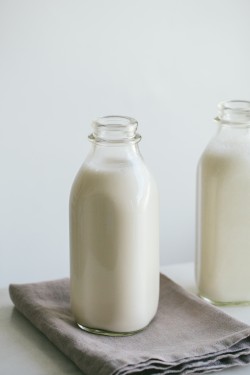
courtesy of Nectar and Green and Brian Samuels Photography
Notes: If your dates or vanilla bean are dry/stiff, soak in water to soften before use. You can also use another sweetener of your choice like maple syrup. Same goes for vanilla – feel free to use vanilla extract for a more subtle vanilla flavor.
Nut milk is versatile, low fat/low calorie, and absolutely delicious! If you choose to make your own, your ability to customize the mixture to your tastes is all but endless. If you choose to purchase your nut milk from the store, just be on the lookout for added sugars or other hidden ingredients – make sure you read the labels!
You can have nut milk in your coffee, with cereal, as a replacement for dairy milk in a wide range of recipes, to create your own ice cream… and on and on! Check out almond milk, cashew milk, and the other nut milks available, and have some fun experimenting with your own recipes!



